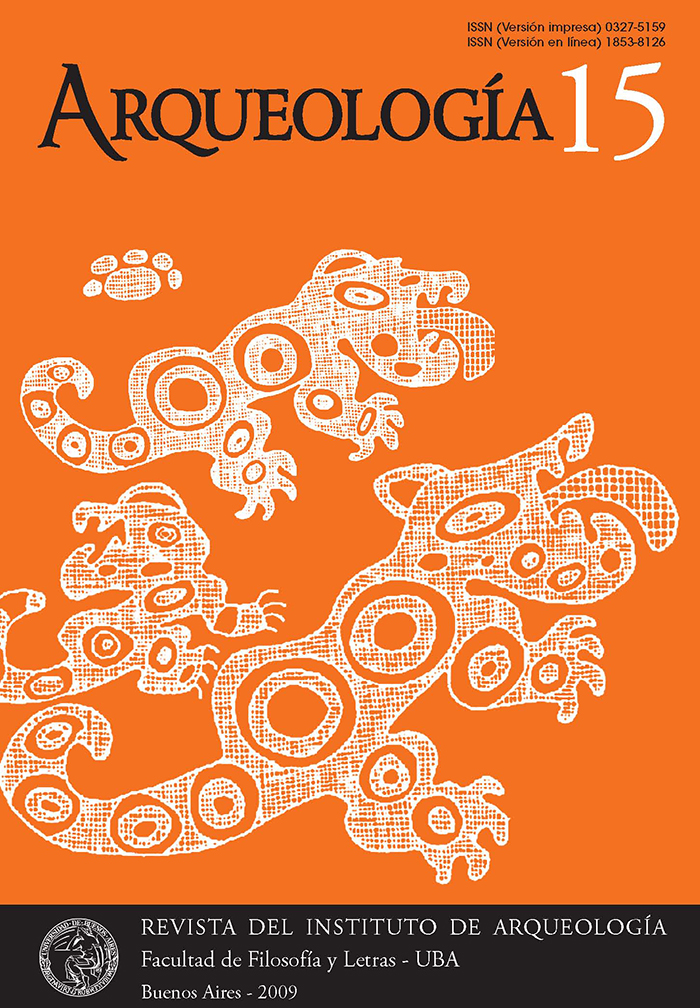Agricultura y recolección en el Tardío Prehispánico de las Sierras de Córdoba (Argentina): el registro arqueobotánico de C.Pun.39
Palabras clave:
C.Pun.39, Valle de Punilla (Córdoba), Arqueobotánica, Subsistencia.
Resumen
El estudio arqueobotánico realizado en el sitio multipropósito C.Pun.39 (valle de Punilla, Córdoba), en el marco de las estrategias de subsistencia de las sociedades prehispánicas tardías (1000-300 AP), permitió la observación de restos vegetales a nivel macro y microscópico. Entre los macrorrestos carbonizados, se documentó la presencia de un fruto de maíz (Zea mays), así como semillas de poroto común cultivado (Phaseolus vulgaris aff. var. vulgaris), poroto pallar (Phaseolus cf. P. lunatus) y algarrobo (Prosopis cf. P. nigra). Entre los restos adheridos a artefactos cerámicos y de molienda se identificaron microfósiles de maíz, zapallo (Cucurbita sp.), chañar (Geoffroea decorticans) y algarrobo (Prosopis sp.). Los datos obtenidos permiten discutir la presencia e importancia prehispánica de algunos cultígenos, así como el aprovechamiento de frutos silvestres, de los cuales sólo se tenían evidencias arqueológicas indirectas.Descargas
La descarga de datos todavía no está disponible.
Cómo citar
Medina, M. E., López, M. L., & Berberián, E. E. (1). Agricultura y recolección en el Tardío Prehispánico de las Sierras de Córdoba (Argentina): el registro arqueobotánico de C.Pun.39. Arqueología, 15, 217-230. Recuperado a partir de http://revistascientificas.filo.uba.ar/index.php/Arqueologia/article/view/1706
Número
Sección
Notas
Los autores/as que publiquen en esta revista aceptan las siguientes condiciones:
- Los autores/as conservan los derechos de autor y ceden a la revista el derecho de la primera publicación, con el trabajo registrado mediante Licencia Creative Commons 4.0 Internacional (CC-BY-NC-SA), que permite a terceros utilizar lo publicado siempre que mencionen la autoría del trabajo y a la primera publicación en esta revista.
- Los autores/as pueden realizar otros acuerdos contractuales independientes y adicionales para la distribución no exclusiva de la versión del artículo publicado en esta revista (p.e. incluirlo en un repositorio institucional o publicarlo en un libro) siempre que indiquen claramente que el trabajo se publicó por primera vez en esta revista.
- Se permite y recomienda a los autores/as a publicar su trabajo en Internet (p.e. en sus sitios web personales o en depósitos institucionales), tanto antes como después de su publicación en esta revista, siempre y cuando proporcionen información bibliográfica que acredite, si procede, su publicación en ella. De esta manera, pueden favorecerse intercambios productivos y a una mayor y más rápida difusión del trabajo publicado (vea The Effect of Open Access).



.png)

(1)13.png)






1.jpg)
1.png)
1.jpg)


13.png)
1.png)


(1)1.png)









